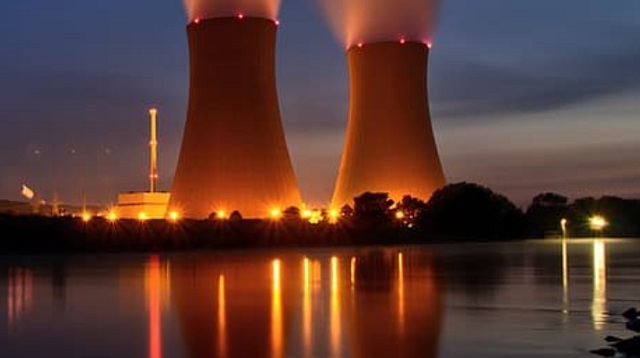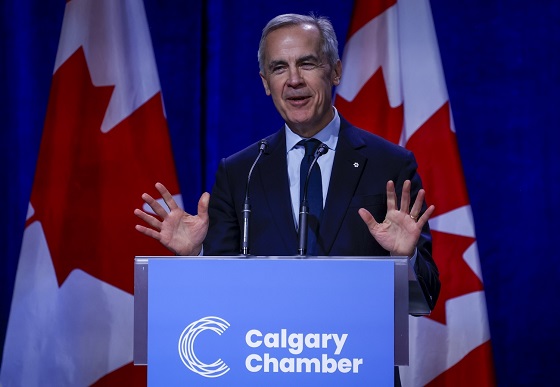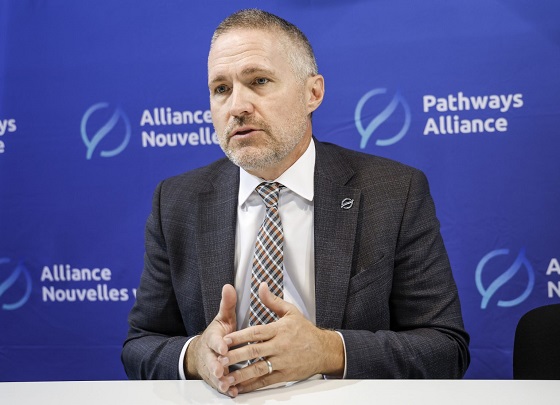At Jordan Peterson’s ARC (Alliance for Responsible Citizenship) conference I was asked to share the most important truths about our energy future.
I boiled it down to 7. Understand these and you’ll be a better thinker than 97% of energy or climate “experts.”

Energy Truth 1
To decide what to do about fossil fuels and other forms of energy, we must carefully weigh their benefits and side-effects.
- When evaluating what to do about a product or technology—e.g., a prescription drug—we need to carefully weigh the benefits and side-effects of our alternatives.
But most “experts” just focus on fossil fuels’ negative climate side-effects.
- It is particularly crucial to weigh any negative climate side-effects of continuing fossil fuel use against the climate mastery benefits that come with them, as those benefits can neutralize or overwhelm negatives.
E.g., more energy powering heating and cooling, irrigation, building, etc.
- Example of fossil-fueled climate mastery overwhelming negative impacts: drought.
Any contribution of rising CO2 to drought has been overwhelmed by fossil-fueled irrigation and crop transport, which have helped reduce drought deaths by over 100 times over 100 years as CO2 levels have risen.1

Energy Truth 2
Fossil fuels for the foreseeable future will remain a uniquely cost-effective (affordable, reliable, versatile) and scalable source of energy.
- Myth: There are no real benefits of continuing fossil fuel use because it can be rapidly replaced by mostly solar and wind.
Truth: Fossil fuels are and for decades will remain uniquely cost-effective: affordable, reliable, versatile—on a scale of billions of people in thousands of places.
- Myth: Fossil fuels are being rapidly replaced in an “energy transition” to solar and wind.
Truth: Fossil fuel use is 80% of the world’s energy and still growing despite 100+ years of aggressive competition and 20+ years of political hostility and massive solar and wind favoritism.2

- Myth: Fossil fuel use will soon rapidly decline because countries know “green” energy will be cheaper.
Truth: Countries that care most about cheap energy are pro-fossil fuels.
E.g., China, which uses mostly coal to produce “green” tech, has over 300 planned new coal plants designed to last over 40 years.3
- Myth: Solar and wind are growing fast by outcompeting fossil fuels with superior economics.
Truth: Solar and wind are growing fast only when given massive government preferences—mandates, subsidies, and no penalty for unreliability—along with crippling government punishments of fossil fuels.
- Myth: Solar and wind are now cheaper than fossil fuels.
Truth: For the overwhelming majority of the world’s energy needs, solar and wind either can’t do what fossil fuel can—e.g., non-electricity energy uses such as airplanes or cargo ships—or are far more expensive.4
- Myth: Solar and wind electricity is getting so cheap that it will lead to rapid electrification of the 4/5ths of today’s energy that is not electricity.
Truth: When you factor in full cost of the 24/7 life support that unreliable solar and wind electricity need, they are far more expensive.5

- Fossil fuels are uniquely able to provide energy that’s low-cost, reliable, and versatile on a scale of billions of people. This is due to fossil fuels’ combination of remarkable attributes—fossil fuels are naturally stored, concentrated, and abundant energy—and generations of innovation by industry.
- There is currently only one energy technology that can match (actually exceed) fossil fuels’ combination of naturally stored, concentrated, abundant energy: nuclear. Nuclear may one day outcompete all uses of fossil fuels, but this will take radical policy reform and generations of innovation and work.
Energy Truth 3
The more cost-effective and scalable energy is, the more human beings can flourish on this naturally deficient and dangerous planet.
- Myth: The Earth will be a highly livable place—stable, sufficient in resources, and safe—as long as we don’t impact it too much.
Truth: Earth is very inhospitable—dynamic, deficient, dangerous—unless we have the productive ability to transform and impact it to be abundant and safe.
- The more energy is cost-effective—affordable, reliable, versatile—and scalable to billions of people in thousands of places, the more people can use machines to produce the values they need to flourish on this naturally deficient and dangerous planet.
- Thanks to today’s unprecedented availability of cost-effective energy (mostly fossil fuel) the world has never been a better place for human life. Life expectancy and income have been skyrocketing, with extreme poverty (<$2/day) plummeting from 42% in 1980 to <10% today.6

Energy Truth 4
Given that the vast majority of the world is energy-poor, the world needs far more energy as quickly as possible.
- The world needs much more energy.
Billions of people lack the cost-effective energy they need to flourish. 3 billion use less electricity than a typical American refrigerator. 1/3 of the world uses wood or dung for heating and cooking. Much more energy is needed.7

- Myth: Poor countries will “leapfrog” fossil fuels and go right to solar and wind.
Truth: No rich country has been able to abandon fossil fuels even at huge cost, while every dramatic increase in wealth has involved fossil fuels: Japan, Singapore, South Korea, China, etc.
Poor countries are not guinea pigs.
- The desperate lack of life-giving, cost-effective energy means that any replacement for fossil fuels must not only provide energy to the 2 billion who use significant amounts of energy today but to the 6 billion who use far less. Rapidly eliminating fossil fuels would be mass murder.
- Summary: Fossil fuels are a near-term irreplaceable source of the scalable energy humans need to flourish.
With fossil fuels billions more people can have the opportunity to flourish. Without them, billions of energy-starved people plunge into poverty and early death.
Energy Truth 5
Any negative climate side-effects of our massive fossil fuel use so far have been completely overwhelmed by their climate mastery benefits—as evidenced by the 98% decline in climate disaster deaths over the last 100 years.
- Myth: We are more endangered than ever by climate because of fossil fuels’ CO2 emissions.
Truth: We have a 98% decline in climate disaster deaths due to our enormous fossil-fueled climate mastery abilities: heating and cooling, infrastructure-building, irrigation, crop transport.8

- Myth: Even if climate-related disaster deaths are down, climate-related damages are way up, pointing to a bankrupting climate future.
Truth: Even though there are many incentives for climate damages to go up—preferences for riskier areas, government bailouts—GDP-adjusted damages are flat.9

Energy Truth 6
Mainstream climate science predicts levels of warming and associated climate changes that human beings can continue to master and flourish with.
- Myth: Even if we’re safe from climate now, we can expect future emissions to lead to disaster.
Truth: Since today’s unprecedented safety exists after 100+ years of rising CO2, and with 1° C warming, we should be skeptical that further CO2 rises will somehow overwhelm us.
- Climate mastery is so powerful that for CO2 emissions to be apocalyptic enough to justify rapid fossil fuel restriction, let alone elimination, they’d need to have unprecedented impacts like:
- Seas rising feet per decade
- Storms becoming 2 times more powerful
Science shows nothing like this.
- Myth: Future warming is ominous because heat-related death is already such a catastrophic problem.
Truth: Even though Earth has gotten 1°C warmer, far more people still die from cold than heat (even in India)! Near-term warming is expected to decrease temperature-related mortality.10

- Myth: Future warming is ominous because it will be worst in hot areas.
Truth: The mainstream view in climate science is that more warming will be concentrated in colder places (Northern latitudes) and at colder times (nighttime) and during colder seasons (winter). Good news.11

- Myth: Future warming will accelerate as CO2 levels rise.
Truth: Mainstream science is unanimous that the “greenhouse effect” is a diminishing effect, with additional CO2 leading to less warning.
Even IPCC’s most extreme, far-fetched scenarios show warming leveling off.12
- Myth: We face catastrophically rapid sea level rises, which will destroy and submerge coastal cities.
Truth: Extreme UN sea level rise projections are just 3 feet in 100 years. Future generations can master that. (We already have 100 million people living below high tide sea level.)13

- Myth: Hurricane intensity is expected to get catastrophically higher as temperatures rise.
Truth: Mainstream estimates say hurricanes will be less frequent and between 1-10% more intense at 2° C warming. This is not at all catastrophic if we continue our fossil-fueled climate mastery.14

- Myth: We face catastrophic increases in dangerous wildfires, an “Earth on fire.”
While the media increasingly reports on fires and draws connections to warming, the world burns less than 20 years ago and far less than 100 years ago. Fire danger primarily depends on human mastery.15
- Summary: Continuing fossil fuel use will lead to levels of warming and other changes that we can master and flourish with.
Policy implications
- Energy freedom —> CO2 levels rise, life continues to get better and better
- Net zero —> CO2 levels rise more slowly, billions of lives ruined
Energy Truth 7
A policy of energy freedom, including but not limited to fossil fuel freedom, is the fastest path both to more plentiful energy and to more cost-effective alternatives.
- What are “energy freedom policies”?
Government actions to protect the ability of producers to produce all forms of energy and consumers to use all forms of energy, so long as they don’t engage in reasonably preventable pollution or endangerment of others.
- Energy freedom policies include:
- Protecting the freedom to develop fossil fuels and other forms of energy. E.g., deep geothermal development.
- Protecting the freedom to use fossil fuels and all other forms of energy. E.g., “decriminalizing nuclear.”
- Energy freedom policies are more likely to lead to long-term emissions reductions.
Because they accelerate the rate at which nuclear and other alternatives become globally cost-competitive. (The only moral and practical way to reduce global emissions.)16

- Fact: The 2 biggest instances of CO2 reduction have come from energy freedom policies:
- Nuclear: Freedom led to cost-effective and scalable nuclear power until the “green” movement virtually criminalized it.
- Gas: Freedom led to significant substitution of gas vs. coal.
- “Net zero by 2050,” by failing to recognize the unique benefits of fossil fuels, is catastrophic when barely implemented and would be apocalyptic if fully implemented.
Energy freedom gives billions more people the energy they need to flourish and unleashes truly cost-effective alternatives.
References
- UC San Diego – The Keeling Curve
For every million people on earth, annual deaths from climate-related causes (extreme temperature, drought, flood, storms, wildfires) declined 98%–from an average of 247 per year during the 1920s to 2.5 per year during the 2010s.
Data on disaster deaths come from EM-DAT, CRED / UCLouvain, Brussels, Belgium – www.emdat.be (D. Guha-Sapir).
Population estimates for the 1920s from the Maddison Database 2010, the Groningen Growth and Development Centre, Faculty of Economics and Business at University of Groningen. For years not shown, the population is assumed to have grown at a steady rate.
Population estimates for the 2010s come from World Bank Data.
- Energy Institute – Statistical Review of World Energy
- As of July 2023, China has over 300 new coal-fired power stations in various planning and construction phases. Global Energy Monitor – Coal Plant Tracker, Coal Plants by Country (Power Stations)
- Alex Epstein – The ultimate debunking of “solar and wind are cheaper than fossil fuels.”
- U.S. Energy Information Administration – Hourly Electric Grid Monitor
- World Bank Data – Poverty headcount ratio at $1.90 a day (2011 PPP) (% of population)
- IEA – Access to affordable, reliable, sustainable and modern energy for all
Robert Bryce – A Question of Power: Electricity and the Wealth of Nations
- UC San Diego – The Keeling Curve
For every million people on earth, annual deaths from climate-related causes (extreme temperature, drought, flood, storms, wildfires) declined 98%–from an average of 247 per year during the 1920s to 2.5 per year during the 2010s.
Data on disaster deaths come from EM-DAT, CRED / UCLouvain, Brussels, Belgium – www.emdat.be (D. Guha-Sapir).
Population estimates for the 1920s from the Maddison Database 2010, the Groningen Growth and Development Centre, Faculty of Economics and Business at University of Groningen. For years not shown, the population is assumed to have grown at a steady rate.
Population estimates for the 2010s come from World Bank Data.
- Roger Pielke Jr. – Weather and Climate Disaster Losses So Far in 2022, Still Not Getting Worse
- Zhao et al. (2021)
Bjorn Lomborg – Climate Change Saves More Lives Than You’d Think
- NOAA – Climate change rule of thumb: cold “things” warming faster than warm things
- IPCC AR6, WG1, chapter 4
- IPCC AR6, WG1
- NOAA – Global Warming and Hurricanes
- Roger Pielke Jr. – What the media won’t tell you about … Wildfires
- Reuters – Analysis: China no closer to peak coal despite record renewable capacity additions
Reuters – India rejects net zero carbon emissions target, says pathway more important
Alex Epstein – A pro-human, pro-freedom policy for CO2 emissions























